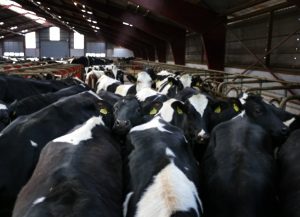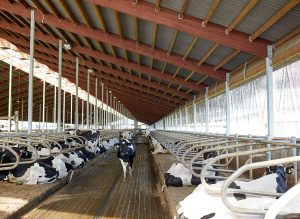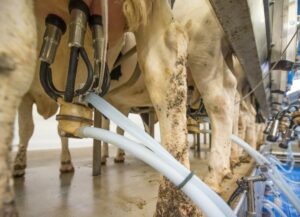Andrés Haro
Automatic milking systems (AMS) and other automated technologies provide farmers with extra time and greater work flexibility, so they are being widely adopted. However, while the benefits to the workers are obvious, it is necessary to see how these technologies may affect cow health and productivity.
In terms of behavior, studies indicate that cow stress’ response in both AMS and conventional milking systems (CMS) is comparable and likely more influenced by management in each farm than by the type of milking.
In order to examine the long-term effects, studies have mostly focused on the health and physiology of the cow, with results showing minimal or inconsistent differences between both systems. This re-emphasizes that they depend more on good management than on the type of milking.
Since management depends on people, presumably the human element of a milking system has the most impact on the animals. Since in AMS management and interaction of cows with people differ from that in CMS, it is important to know how this change influences the human-animal interface.
With this concept in mind a study was carried out in New South Wales, Victoria and Tasmania (Australia; Wildridge et al., 2020) which analyzed how the transition from CMS to AMS on four dairy farms with a grazing feeding system, and another farm with an intensive feeding system, affected the relationship between operators and cows. Each farm was visited twice, the first time while still on CMS and the second 12 months later, when they had already completed the transition to an AMS.
On each visit the farm manager answered a survey on negative and positive attitudes and cow care and management. The daily routine of the farm, defined as the activities that took place near or with the cows (milking, moving the cow for milking, feeding and other contact) was recorded to observe the interactions between cows and operators (frequency and duration), and the avoidance distance that the cow maintained when an employee approached.
A management test was also carried out in which operators were asked to encourage cows to pass one at a time, from room to room through a door. The effort made by each employee (physical and vocalization) to pass the cows and the response of each animal (walking, running, slipping or the combination of all three) was recorded.
Results of the survey
Although the survey questions were somewhat subjective (i.e. “cows are ugly”, “cows are intelligent”, “is routine important for cows?”), the results of negative and positive attitudes and cow care and management did not appear to identify any patterns between CMS or AMS indicating consistent attitude changes.
There was a greater variation in results between farms than between type of system. This variation may suggest that the transition from CMS to AMS does not change the positive or negative nature of the staff’s attitude towards their cows; however, a larger sample size would be needed to confirm this hypothesis.
However, the analysis of the results of positive and negative attitudes indicated that employee interactions towards their cows were positive in this study.
Time interacting with cows was less on farms with AMS
On a farm with CMS the main interactions of the operators with the cows occurred when they were brought for milking, during milking itself and in occasional health check-ups, tasks that occupied on average 5.6 h/day. By contrast, moving to an AMS reduced the time operators spent near the cows to 2.6 h/day. This was because AMS eliminates many of the milking-related tasks, and the remaining time was not spent on other cow interaction tasks.
However, it was difficult to record the entire farm routine as well as operator-cow interactions so the results while not indicating the time each person interacted with the cows, provided information on the type of interaction with each employee.
Effects of automatic milking system on avoidance distance
The avoidance distance of cows in the presence of an operator was significantly reduced after the transition, compared to that recorded during on CMS (average values: 2.4 and 3.28 m).
This result suggests that the change in operator-cow interactions had a greater influence on the human-animal relationship than the frequency or duration of those interactions.
In addition, there was an association between the cow’s age and the type of milking system with regards to the avoidance distance, so that older cows were closer to the operator compared to young cows that were scared the most.
Management test
The physical effort applied by employees to encourage cows to move was not different between both milking systems. However, in the AMS the operators had to rely on more vocalizations to get the cows to move. Some studies indicate that this increased vocal effort is the result of cows being less afraid to be close to people thanks to positive management, which means that the operators need to “insist more” on the animals to obey.
Another evidence that showed that cattle were calmer and less afraid of people in AMS, was that the number of episodes in which cows ran or slipped was reduced.
Conclusion
In summary, although interactions between operators and their cows decreased, the operator and cow ratio improved after the transition to AMS, something that was evident in reducing the avoidance distances and stress of cows in response to the worker’s proximity.
Reference
Wildridge, A.M., Thomson, P.C., Garcia, S.C., Jongman, E.C., Kerrisk, K.L. 2020. Transitioning from conventional to automatic milking: Effects on the human-animal relationship. Journal of dairy science: 103(2): 1608-1619.
© 2021 Dairy Knowledge Center. All Rights Reserved.









